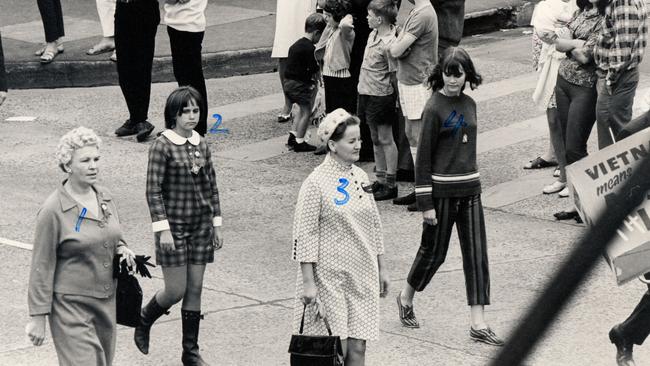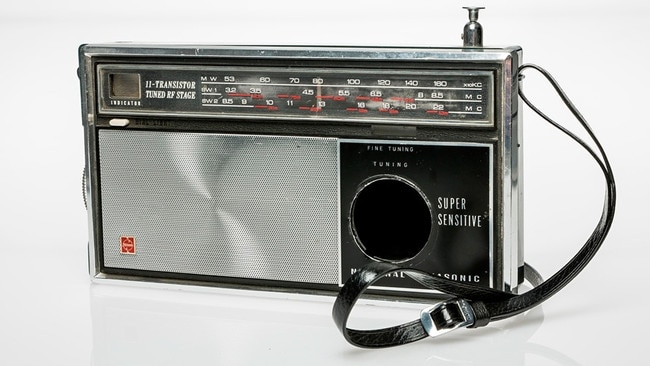Spy exhibition tells story of Australia’s security agencies
A fascinating new exhibition tells the story of Australia’s security agencies with photos, intelligence memos and several spy gadgets.

They belong in a James Bond movie or John le Carre novel: recording equipment hidden in radios, cameras concealed in War and Peace and letters written in invisible ink. But they are from the real world of secret agents and espionage, and not that imagined for the silver screen or literary fiction.
A fascinating new exhibition tells the story of Australia’s security agencies with dozens of photos, intelligence memos and reports, and a range of spy gadgets. It has been developed by the National Archives of Australia and opens at the Whitlam Institute at Western Sydney University next week, before touring nationally.
The National Archives has delved into its extensive collection and loaned records and objects from ASIO to uncloak the role of spies and the work of intelligence gathering in Australian history.
“It is the first time ASIO has actively contributed to a public exhibition,” notes Duncan Lewis, the director-general of security. He acknowledges “spooks and spies” continue to inspire popular culture but warns that governments must remain vigilant against “espionage, sabotage or subversion” in the global digital age.

Whitlam Institute director Leanne Smith says the exhibition offers an opportunity to understand how intelligence work is carried out: “You can learn about what it is like to be a spy, and also to be under surveillance.” It “also explores how security agencies can operate while maintaining our democratic values”.
Indeed, the exhibition prompts the question as to whether intelligence officials sometimes targeted people unfairly and, operating in the shadows, overstepped the bounds of law. Were students at a May Day march in Wollongong in 1966 really a national security threat? Or mothers involved in the anti-conscription Save Our Sons movement?
Yet the Cold War was a dangerous time. There was a Soviet spy ring operating in Australia and ASIO has acknowledged in recent years that it was penetrated. The Communist Party of Australia was a hive of subversive activity and its links went deep into the Labor Party. However, many young communists were harmless, though misguided in their beliefs. One of the most dramatic moments during the Cold War occurred in 1954 when Robert Menzies announced to a stunned House of Representatives that there had been a high-level Soviet diplomatic defection. Vladimir Petrov, third secretary in the Soviet embassy, had requested political asylum. The defection was managed by ASIO deputy director Ron Richards.
Petrov handed over embassy files that contained information about Soviet intelligence activities in Australia in exchange for £5000 — about $170,000 in today’s value — and political asylum.
Menzies announced the establishment of a royal commission into Soviet espionage. These events took place just six weeks before a federal election in which the Menzies government was returned to power.
There were dramatic scenes at Sydney Airport when Petrov’s wife, Evdokia, was escorted to a plane by Soviet officials to return her to Moscow. Evdokia, who did not know about her husband’s defection in advance, was met by anti-communist protesters and, after a struggle, lost her shoe on the tarmac. When her plane landed in Darwin, she was offered asylum, which she accepted.
The Petrov defections are just one of several case studies examined in the exhibition Spy: Espionage in Australia and chronicled in the superb catalogue written by curator Emily Catt. The exhibition, she writes, is an opportunity to investigate “the real stories behind the gloss of make-believe”.
For those who might fancy themselves as the next George Smiley, Jason Bourne or Ethan Hunt, there are interactive elements such as deciphering codes, finding “dead drop” locations, identifying targets in real life and photos, and reading invisible ink. Or you can imagine being a defector handed an “operational emergency kit” complete with a comb, razor, toothbrush and pyjamas.
David Fricker spent a decade working for ASIO before he was appointed director-general of the National Archives in 2012. “The veil of secrecy over our intelligence agencies means that most Australians are left wondering about the reality of intelligence and espionage,” he says. “They wonder what the agencies are up to and how much surveillance we are subjected to.”
The exhibition considers the role of secret agents in intelligence gathering, such as Wilson le Couteur, a former shipping agent who became Australia’s first spy in 1901. Interviews with unidentified ASIO staff about their work today give the exhibition a contemporary component.
Fricker says the exhibition provides an opportunity for citizens to consider the ongoing “purpose and nature” of Australia’s intelligence agencies. “Access by Australians to a national archival collection helps them to better understand their culture, heritage and democracy, and to hold their government to account,” he says.
That collective memory, preserved through the National Archives, provides a window into the work of our security agencies at a time when new threats — foreign and domestic — remain a clear and present danger.
Spy: Espionage in Australia opens at Western Sydney University’s Whitlam Institute next week.



